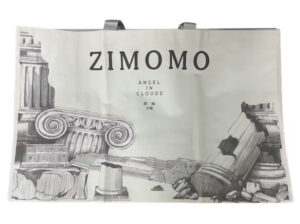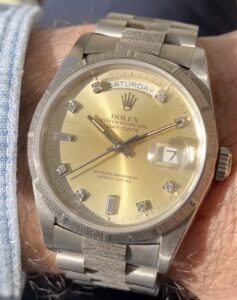In the whirlwind of contemporary collectible culture, where storytelling meets vinyl and fantasy becomes tactile, few entities loom larger than Pop Mart. The Beijing-based art toy giant has continuously reshaped how we engage with physical objects—not simply as toys, but as totems of emotion, nostalgia, and a vivid imagination. Among its most striking evolutions in 2025 is the whimsical convergence of characters under the ethereal new drop: “Angels in the Clouds”, a limited edition microverse featuring Labubu, Zomimo, and a new supporting cast of winged figures—a surrealist menagerie released alongside a functional yet statement-making themed tote bag.
The Vinyl Vanguard: Pop Mart’s Cultural Position
Founded in 2010, Pop Mart has emerged as an empire for designer toys, catapulting obscure character IPs and underground artists into global superstardom. At its heart is a core principle: merging fine art sensibilities with accessible consumer culture. The brand’s signature blind box format has transformed collecting into ritual—each unboxing a dopamine hit laced with suspense, nostalgia, and childlike wonder.
While earlier franchises such as Molly and Skullpanda cemented the brand’s identity, 2025’s “Angels in the Clouds” reveals a maturing ethos: one less concerned with trend-following, more invested in metaphysical storytelling and the elasticity of innocence.
Labubu Ascends: Mischief with Wings
Labubu, the mischievous imp with sharp teeth and scraggly ears—originally designed by Kasing Lung—has long walked the line between adorable and grotesque. In this cloud-themed collection, Labubu sheds some of its usual malevolence and embraces serenity. Rendered in translucent wings, dreamy pastels, and soft iridescent finishes, Cloud Labubu becomes a creature of paradox: angelic, but with a smirk.
Unlike the forest-dwelling iterations of the past, this version of Labubu is reimagined as a guardian of dreams—trading shadowed glades for vaporous skies. The figure’s body features subtle gradients of silver-blue, lavender, and peach, sculpted with minute texture to resemble light refracted through fog. Yet the teeth remain—reminding us that even angels have mischief in their marrow.
Zomimo: Floating Through Duality
If Labubu is the embodiment of playful chaos, Zomimo represents a more introspective foil. A lesser-known but equally captivating IP, Zomimo’s form straddles zombie and animal, carrying with it a visual language of emotional fracture—half-resigned, half-hopeful.
In the Angels in the Clouds series, Zomimo is cast in a muted palette of pearl white and blush tones. Its stitched-up body and closed eyes evoke slumber, perhaps even a gentle kind of death. Wings are clipped to the back—smaller, more delicate than Labubu’s—as if Zomimo is not quite sure whether it belongs in the sky or remains tethered to the earth. This ambiguity deepens the figure’s emotional register. It’s not just cute—it’s lonely, sacred, and open to projection.
Each Zomimo in the series is accented with halo motifs, flocked textures on the feet, and tiny sculptural clouds that fit as bases, transforming the figure into a floating diorama.
Angels in the Clouds: A Microcosmic Utopia
The supporting cast of the Angels in the Clouds series includes six angelic characters—entirely new to Pop Mart’s lineup—each built on soft, cherubic forms with surreal elements: crystal horns, jelly-like wings, and translucent halos. Some cradle cloud-shaped pillows. Others clutch metallic hearts or storm globes. These figures evoke Rococo innocence but through a lens of futuristic minimalism.
The artistry is apparent not only in the forms but also in their finishes. Semi-glossed and pearlescent polymers, embedded glitter, and airbrushed pastel transitions create an aesthetic that is both tactile and ephemeral. The clouds, meanwhile, take on symbolic weight—representing states of mind as much as physical elevation: serenity, melancholy, playfulness, and existential drifting.
Collectors have noted the stark contrast between the warmth of these designs and the underlying fragility of the figures themselves—a thematic consistency Pop Mart increasingly threads into its releases.
The Tote Bag: Mobility Meets Myth
Rounding out the release is a Pop Mart x Angels in the Clouds Tote, which functions as both merch and metaphor. Made from a semi-sheer organza-nylon hybrid, the tote is printed with a constellation map that includes icons from the collection. Feather-stitched handles and cloud-shaped zipper pulls add a couture-like detail, while a removable plush Labubu charm serves as both decoration and portable token.
While other streetwear brands often treat merch as an afterthought, Pop Mart understands it as an extension of character mythology. The tote becomes a mobile shrine—part fashion accessory, part reliquary—allowing fans to physically participate in the narrative. It’s not just about owning the toy; it’s about weaving the mythology into one’s own aesthetic life.
Pop Mart’s Psychological Alchemy
What makes the Angels in the Clouds capsule so culturally potent is its capacity for psychological resonance. These are not just designer toys. They are emotional avatars, each standing in for a mood, a memory, or a desire. In a time of accelerated digital existence and hyper-fragmented attention, Pop Mart’s tangible, detail-rich miniatures serve as grounding rituals.
There’s also the underlying principle of contrast—cuteness against dread, heaven against horror—a dynamic particularly potent in Asian character design traditions, from Sanrio to Takashi Murakami. The idea that dark and light can co-exist in miniature form is not just stylistic; it’s philosophical. Labubu’s smirk beneath a halo isn’t ironic—it’s honest.
Art, Emotion, and Collectible Culture
Angels in the Clouds is more than a toy series. It’s a floating cathedral of vinyl expression—blending sacred iconography with irreverent play, and pushing Pop Mart into a space where storytelling, fashion, and object worship converge.
By lifting Labubu and Zomimo into the sky, Pop Mart delivers a gentle reminder: that in our search for levity, we don’t have to abandon our monsters. We can lift them, too. And carry them in clouds, in totes, in our pockets. In doing so, we claim a piece of the myth ourselves.
No comments yet.









